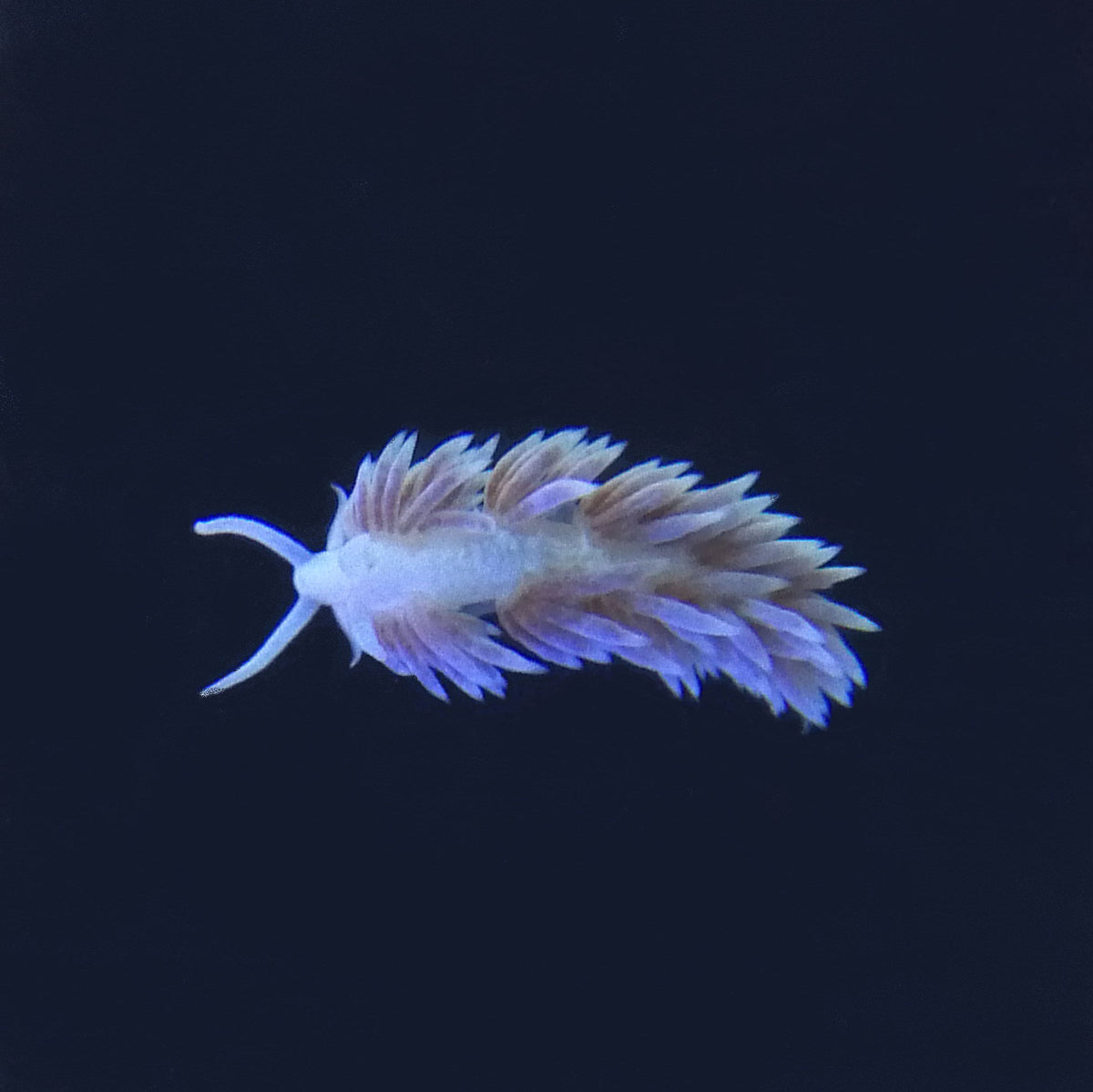
Using Berghia Nudibranchs to Control Pest Aiptasia Anemones Naturally
|
|
Berghia Nudibranchs (Aeolidiella stephanieae) are one of nature's solutions to controlling the prolific Aiptasia anemone. On a wild reef there are a variety of Aiptasia predators including many species of Butterflyfish, Filefish, Crabs and Shrimp. Unfortunately, none of these feed primarily on Aiptasia and they often eat coral, tube worms, clams, anemones, and other polyps. Berghia Nudibranchs are the only creature that feed exclusively on Aiptasia and are guaranteed not to bother other life in a reef aquarium.
Aiptasia anemones are a part of the natural fauna found on the world's reefs, but left unchecked they can quickly overun a reef aquarium due to their aggressive, invasive behavior. Aiptasia use sexual and asexual reproduction to spread quickly. This is problematic because they deliver a powerful sting through venomous cells called nematocysts. These stinging cells can cause tissue regression leading to death in corals. They are also capable of stinging and capturing small fish and crustaceans. Asexual reproduction allows Aiptasia to spread incredibly fast. Small masses of cells are pinched off at the base and grow into fully formed Aiptasia within two weeks. Unknowing hobbyists often accelerate this process by trying to manually remove, or scrub away, the first few Aiptasia they see. Every bit of the anemone that floats away quickly becomes a new problem! Aiptasia's Wikipedia provides a lot of detailed information..
Reef aquarists are presented with many “solutions” for Aiptasia anemones. Chemical treatments, Copperband Butterflies, Peppermint Shrimp, and Aiptasia Eating Filefish are all suggested as “reef safe” options. Most hobbyists experience varying results and there are drawbacks. The chemical treatments can affect pH, Calcium, and Alkalinity levels and often kill any coral they accidentally come in contact with. Copperbands, Peppermints, and Filefish will often eat the Aiptasia, but may also nip at corals, tube worms, clams, anemones, and other polyps. This is especially true when most of the Aiptasia are gone. It is impossible to predict each individual animal's behavior and aquarists often find themselves scrambling to remove the supposed solution to their problem. However, there are situations where Berghia are not an option and the reef keeper must do the best they can with the options available to them.
Berghia Nubranchs are the best solution for most Aiptasia infestations because they only feed on the anemone and will not bother any other aquarium life. Berghia are a nocturnal animal that will not add significantly to your bioload or compete for food. Being small (adults max size is 1"-1.5"), they are perfectly suited to getting into the small cracks and crevices where Aiptasia are found.
Mature Berghia can mate and lay eggs daily if enough food is available, and water conditions are adequate. This allows them to increase their colony size quickly. Berghia will breed in the reef aquarium, but it is also possible to breed them in small containers or separate tanks as well. For more information about a simple breeding set up for Berghia Nudibranchs at home, please check out ReefDudes video here.
Berghia have sensory organs called rhinophores that are able to chemically detect Aiptasia. These guide the Berghia to their targets. Berghia can also approach Aiptasia without the pests feeling threatened. This prevents the Aiptasia from firing their stinging cells or releasing their planula larva. Scientists do not completely understand this mechanism, but it resembles the way clownfish can live in sea anemones without being stung.
We recommend a minimum of eight Berghia per one hundred gallons for moderate to heavy infestations. We offer discounted packages to help aquarists accelerate Aiptasia eradication. Berghia must be able to find each other to mate or they will not be able to build a colony large enough to outpace the rate Aiptasia multiply at. Larger aquariums, with only a few Aiptasia, are not a good setting for Berghia. They will likely starve before finding all the Aiptasia. Alternatively, the hobbyist should remove the rock(s) with Aiptasia and scrub off, or kill them, outside the aquarium setting. Further, Berghia cannot access powerheads, plumbing, overflows, and possibly sumps. These can be sources of re-infestation and must be managed manually.
Berghia need good water chemistry, the lack of predators, and water flow that isn't so strong it rips them off the rocks. Wrasses, butterflies, filefish, some dottybacks are all known to eat Berghia. Other predators include Arrow Crabs, Sally Lightfoot Crabs, Pom Pom Crabs, Peppermint Shrimp, Camel Shrimp, and Coral Banded Shrimp. These will also eat Berghia opportunistically. Assuming your Berghia are safe from predation, it usually takes 2-3 months for a starter colony to eliminate an Aiptasia infestation.
Your cart is currently empty.
Start Shopping
